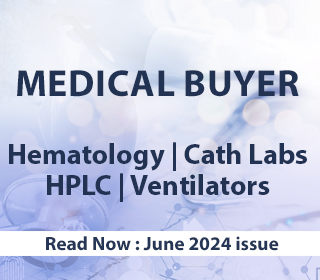International Circuit
Korean AI healthcare lagging due to lack of legal protection

The global AI-based digital healthcare industry is growing rapidly, but Korea does not have legal and institutional tools to protect local companies’ technologies, experts said.
To resolve the issue, the Korean Intellectual Property Office (KIPO) is seeking to revise the Patent Act to allow diagnosis methods to be patented.
According to Infogence Global Research, the global AI digital healthcare market is expected to expand from $4.4 billion in 2020 to $42.3 billion in 2026.
Another market research company, Markets and Markets, predicted that the AI-based medical device and services market will grow ninefold to $45.2 billion in 2026 compared to 2020.
In the past 20 years, companies registered 28,400 patents in the AI-backed digital healthcare industry. The number has grown 46 percent annually since 2015.
Lunit, Vuno, Medical IP, Hutom, Huron, Deep Bio, Corelife Soft, Waycen, and Airs Medical either develop products or seek to enter the AI digital healthcare market.
The Korean AI digital healthcare market is expected to grow 46.34 percent annually, from $32.8 million in 2020 to $322.3 million in 2026.
However, Infogence Global Research predicted that the Korean AI healthcare market size ($322 million) would be much smaller than that of Malaysia ($875 million) or the Philippines ($410 million) in 2026.
Some attribute the gloomy outlook for Korea to the nation’s shortage of legal and institutional infrastructure.
In Korea, 2,700 patents were registered in the past two decades. The number of patents surged after 2015, but many were rejected.
Countries have different stances on recognizing medical practice methods as patents.
Recently, advanced nations started to allow medical practice methods to be patented or broaden the scope of patents.
In the U.S., there is no explicit regulation that excludes medical inventions from patents. Under special regulations, medical practices by doctors are excluded from claims for damages and non-infringement. However, in implementing methods related to medical devices and biotechnology patents, infringement is recognized.
The EU rejected the patent on inventions of medical practice for humans and animals, citing the industrial applicability clause.
However, as it did not comply with the TRIPs (Trade-Related Aspects of Intellectual Property Rights) and the medical service belongs to industry, the EU stipulated non-patenting reasons through an amendment to European Patent Convention (EPC).
In China, the patent law excludes diagnosis and treatment methods from patentability because of humanitarian, social, and ethical reasons.
Japan does not grant patentability to diagnosis and treatment methods because of denial of industrial applicability.
The law excludes medical methods from patentability in Korea, citing the Korean people’s right to health. This is in line with the stance that medicine cannot be regarded as an industry.
However, some doctors criticized the law for not keeping pace with reality.
Due to such criticism, the KIPO seeks to revise the Patent Act.
In March, Rep. Lee Dong-ju of the Democratic Party proposed a bill to put a new provision, “inventions related to surgery methods, treatment or diagnosis of humans or animals,” in Article 32 of the Patent Act (inventions that cannot be patented).
The KIPO is to choose between two proposals – one is to create a new immunity clause for medical practice, and the other is to make a non-patent clause for inventions of surgery or treatment methods performed by doctors on humans. Both scenarios have the effect of including “diagnosis” in patentability.
According to a survey on related associations and organizations in August 2021, 73 percent preferred the first proposal. Except for the Korean Medical Association and the Korean Hospital Association, academics, legal experts, industry officials, and researchers favor amending the Patent Act.
The KIPO supports the second plan a little more, saying it can protect the diagnosis area with intellectual property rights to promote new medical technologies. In addition, it is possible to resolve humanitarian problems by putting exemptions for physicians.
However, the second proposal has the demerits that establishing both non-patent and patentability effect restrictions could cause confusion. There can be a vague area to classify between diagnosis, treatment, and surgery. KBR












